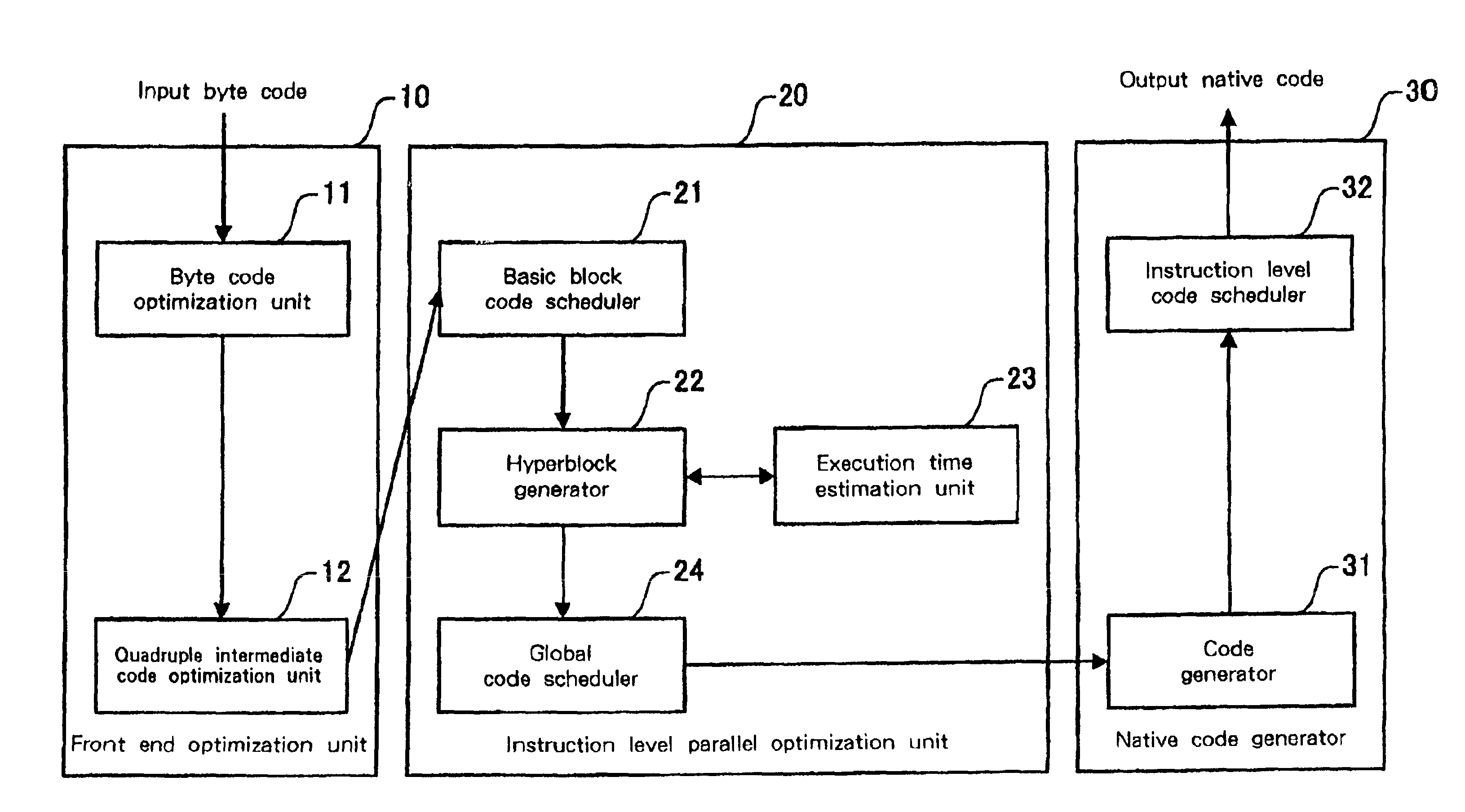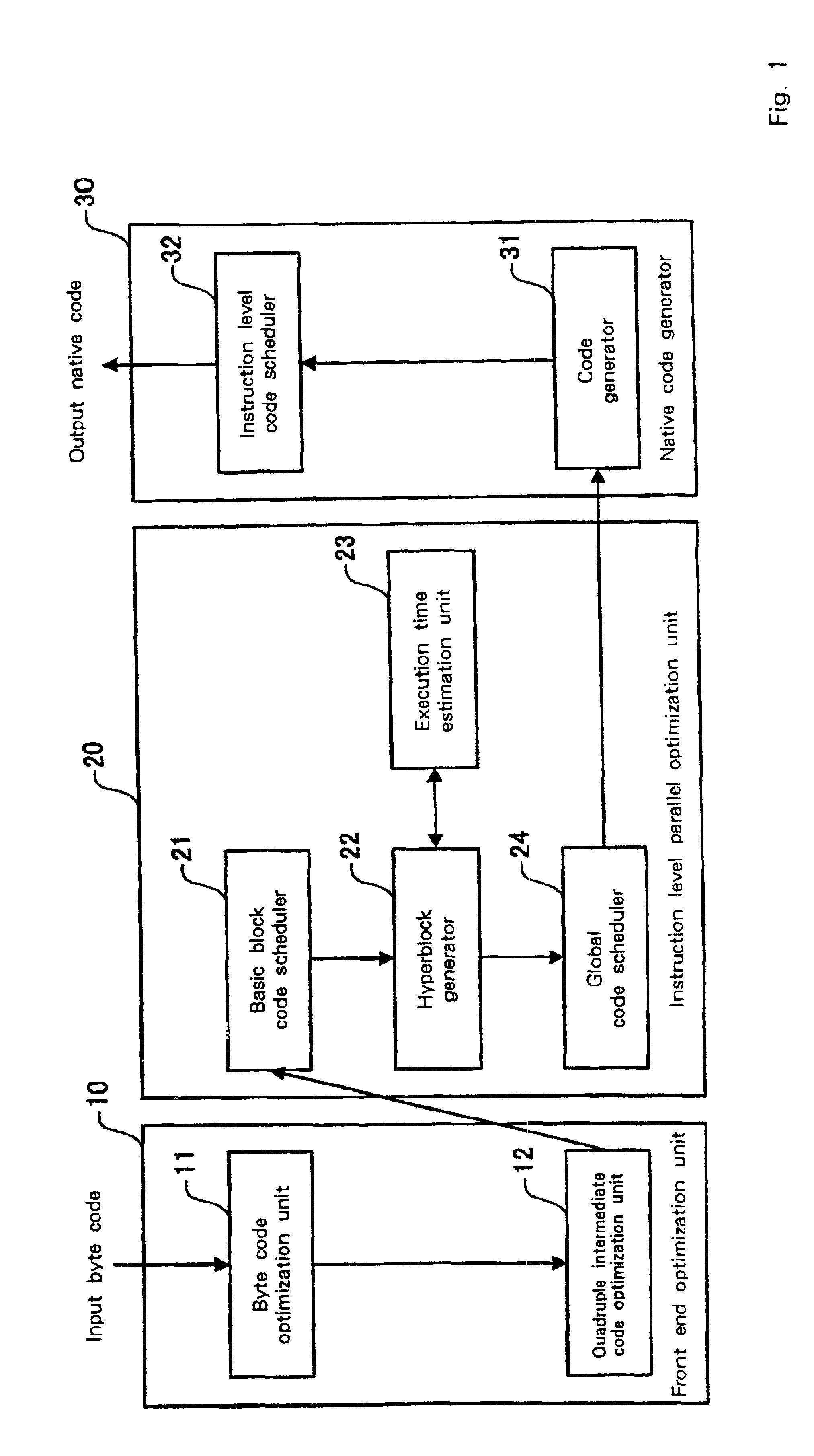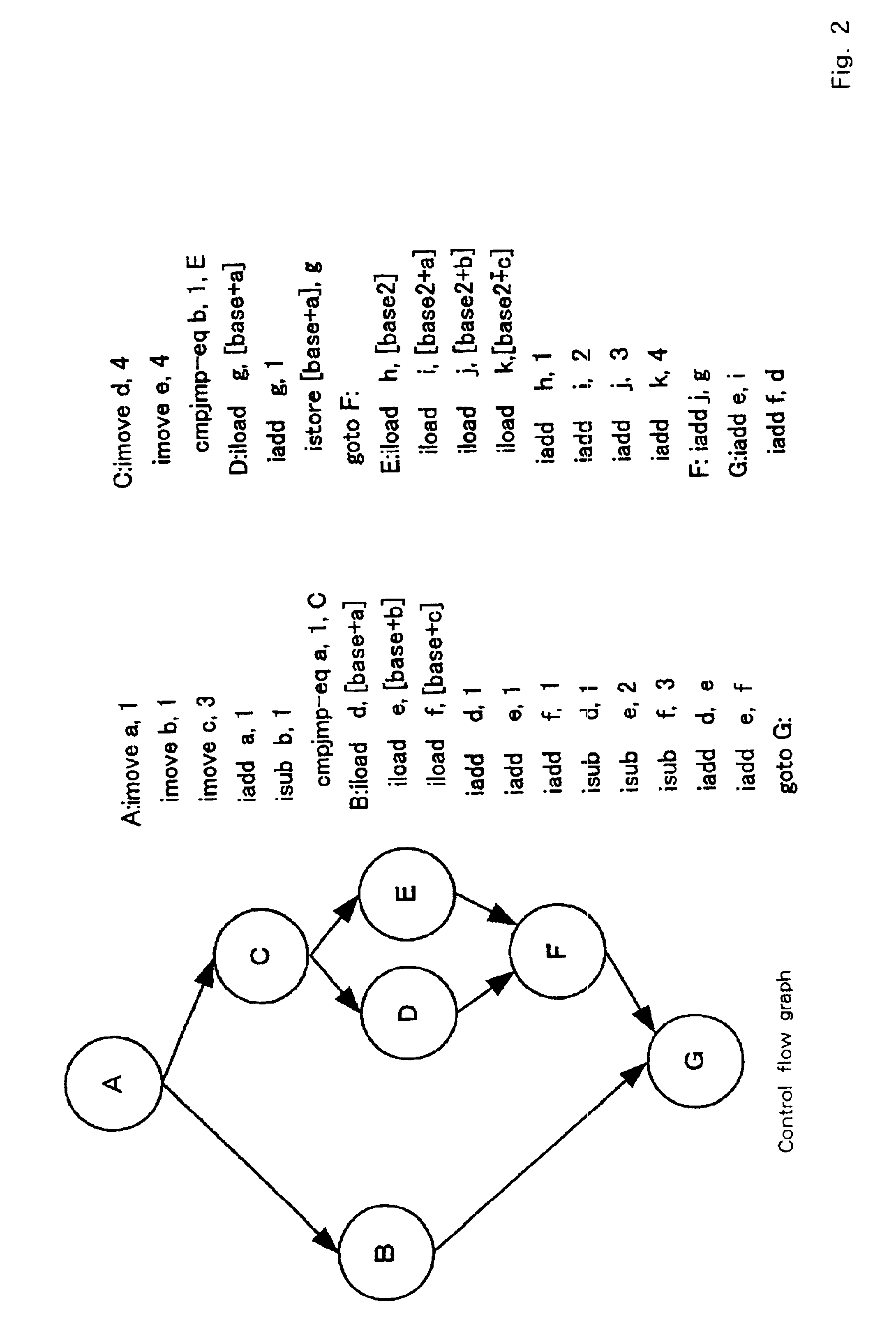Program optimization method, and compiler using the same
a program optimization and compiler technology, applied in the field of computer program optimization methods, can solve problems such as deterioration of execution efficiency, rise in register pressure, and efficiency deterioration
- Summary
- Abstract
- Description
- Claims
- Application Information
AI Technical Summary
Benefits of technology
Problems solved by technology
Method used
Image
Examples
embodiment 1
As shown in FIG. 1, the compiler is a Just-In-Time Compiler for Java.RTM.. In this embodiment, an example is provided in which the present invention is applied to the Just-In-Time Compiler. However, the invention can also be applied to compilers for programs written in various other programming languages.
In FIG. 1, the compiler of the first embodiment includes a front end optimization unit 10, an instruction level parallel optimization unit 20, and a native code generator 30.
The front end optimization unit 10 includes a byte code optimization unit 11, for receiving the byte code for the JAVA program and for optimizing the program at the byte code level, and a quadruple intermediate code optimization unit 12, for optimizing, at the quadruple intermediate code level, the byte codes (e.g., quadruple intermediate byte codes) obtained by the byte code optimization unit 11. The quadruple intermediate code optimization unit 12 divides the target program into basic blocks.
The instruction le...
embodiment 2
An explanation will now be given for the second embodiment for providing information for the dependence paths established between the instructions in the basic block.
According to the second method, information concerning the dependence paths established between the instructions is provided for each basic block of the program. In the processing performed to estimate the execution time for each basic block, the critical path length for each of the basic blocks is re-calculated based on the dependence path.
This operation can be specifically described referring to FIG. 26 which is a diagram for explaining the dependence paths connecting instructions included in the basic blocks C, D, E and F in FIG. 3. As shown in FIG. 3, the critical path lengths of the basic blocks C, D, E and F are respectively 1, 3, 2 and 1. Therefore, according to the first method, the shortest processing times for the basic blocks C, D, E and F (e.g., corresponding to suite 3 in FIGS. 5 and 6) cannot be equal to o...
PUM
 Login to View More
Login to View More Abstract
Description
Claims
Application Information
 Login to View More
Login to View More - R&D
- Intellectual Property
- Life Sciences
- Materials
- Tech Scout
- Unparalleled Data Quality
- Higher Quality Content
- 60% Fewer Hallucinations
Browse by: Latest US Patents, China's latest patents, Technical Efficacy Thesaurus, Application Domain, Technology Topic, Popular Technical Reports.
© 2025 PatSnap. All rights reserved.Legal|Privacy policy|Modern Slavery Act Transparency Statement|Sitemap|About US| Contact US: help@patsnap.com



